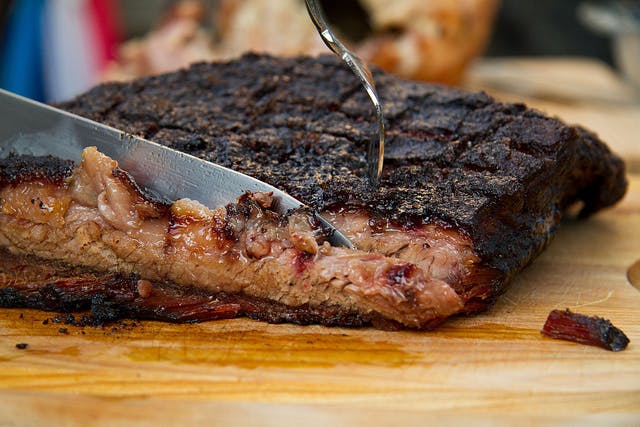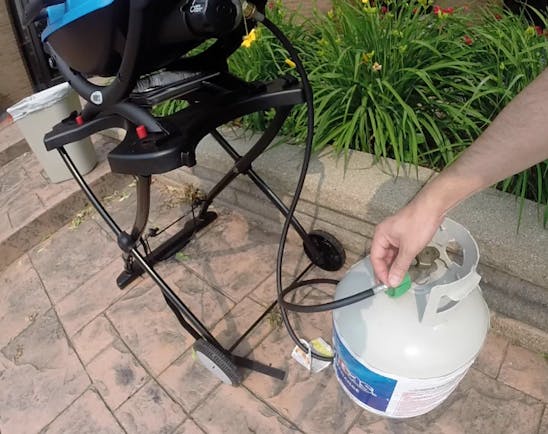Brisket Essentials
Smoker set-up
When embarking on the journey of smoking a brisket, setting your smoker up correctly is one of the most important steps in the process. Every time you smoke a brisket so many things can change from the weather, brisket size, shape, seasoning and wood types, but in order to achieve a perfectly smoked brisket your smoker must be set up perfectly every time.
Click here to watch a video from our good friend Jaime Purviance about how to set up your smoker.
Charcoal and wood selection
I use many different types of fuel including lump, hardwood and a normal charcoal briquette, but my choice for smoking is briquettes, either hardwood or normal, because they stay consistent throughout the long cook. For me, keeping and maintaining temperatures in my smoker is CRITICAL and these fuels make that effort a little easier.
When smoking a brisket my go to wood selection is mesquite. For good luck I usually make a K in the bottom of my smoker with my wood chunks.
Lighting the smoker
I add enough unlit charcoal to fill up the charcoal chamber to the top. Anytime I cook for longer than 8-10 hours this is always the amount of fuel I use. This is a key step because I do not want to run out of fuel half way through the cook.
I then adjust my bottom dampers to 1/8-1/4 open. Try to set the openings the same on each damper.
Fill a chimney starter halfway and light. I place that lit charcoal on top of the unlit and put the three parts of the smoker together.
I preheat and stabilize the unit at 225 degrees for 15-20 minutes, making sure my temps and airflow are perfect and then it's time for the meat!!

Rub
I am a pretty traditional guy when it comes to brisket. My roots in cooking brisket come from Texas where the only thing that goes on a brisket is salt, pepper and the smoke flavor of post oak. Having spent time down in Texas the last couple of years working along side the BBQ greats like Aaron Franklin, Wayne Mueller, Bryan Bracewell, Ronnie Killen, Russell Roegels I've learned what it takes to cook great BBQ. This usually starts with good meat and ends with your BBQ rub. Here is my go to rub for all of my briskets.
½ cup Malibar coarse ground black pepper
½ cup kosher salt
I know you might be looking at this thinking, Kevin you are lying!! There has to be more than that in my brisket rub and truth be told there is not. The fun part about making this rub is you can do different types of black pepper, different grinds and different ratios of pepper but you will not find anything else in my brisket rub. Keep it simple and let your BBQ skills do the talking!!
Water Pan
In my opinion, using a water pan is essential for developing a smoke ring, along with keeping temperatures consistent in the smoker. For 6-8 hour cooks, I use 3-4 liters. For 12 plus hour cooks, I use 5-6 liters.
Wrapping with foil
I wrap the brisket tightly in aluminum foil once it reaches an internal temperature of anywhere from 150-165 degrees, depending on color. If I have a great bark early I will wrap early. This does a couple of things, first it pushes the brisket through the “stall” so it will cook a little faster. Second, it keeps the moisture in and loosens up the muscles, which will help tenderize and keep your brisket moist.
How to tell when it's done
The brisket is done when the internal temperature is around 195-204. If I can place a meat thermometer in it and it feels like a sponge, it's done.

Resting
I rest my briskets sealed in foil for at least 1 hour but prefer 2-3 hours.
Slicing
I slice mine starting at the flat (lean) and work my way down the brisket. Sometimes I will cut the point (moist) away from the flat and then slice. Always, always, always make sure you slice against the grain.

For more information from Kevin about smoking the perfect brisket click here!



